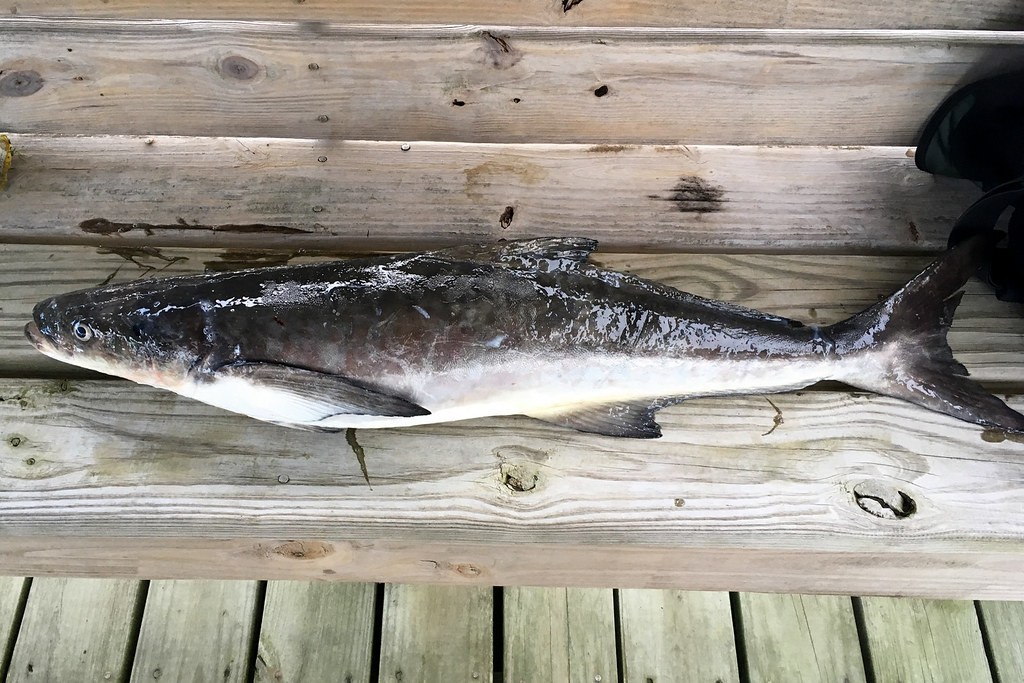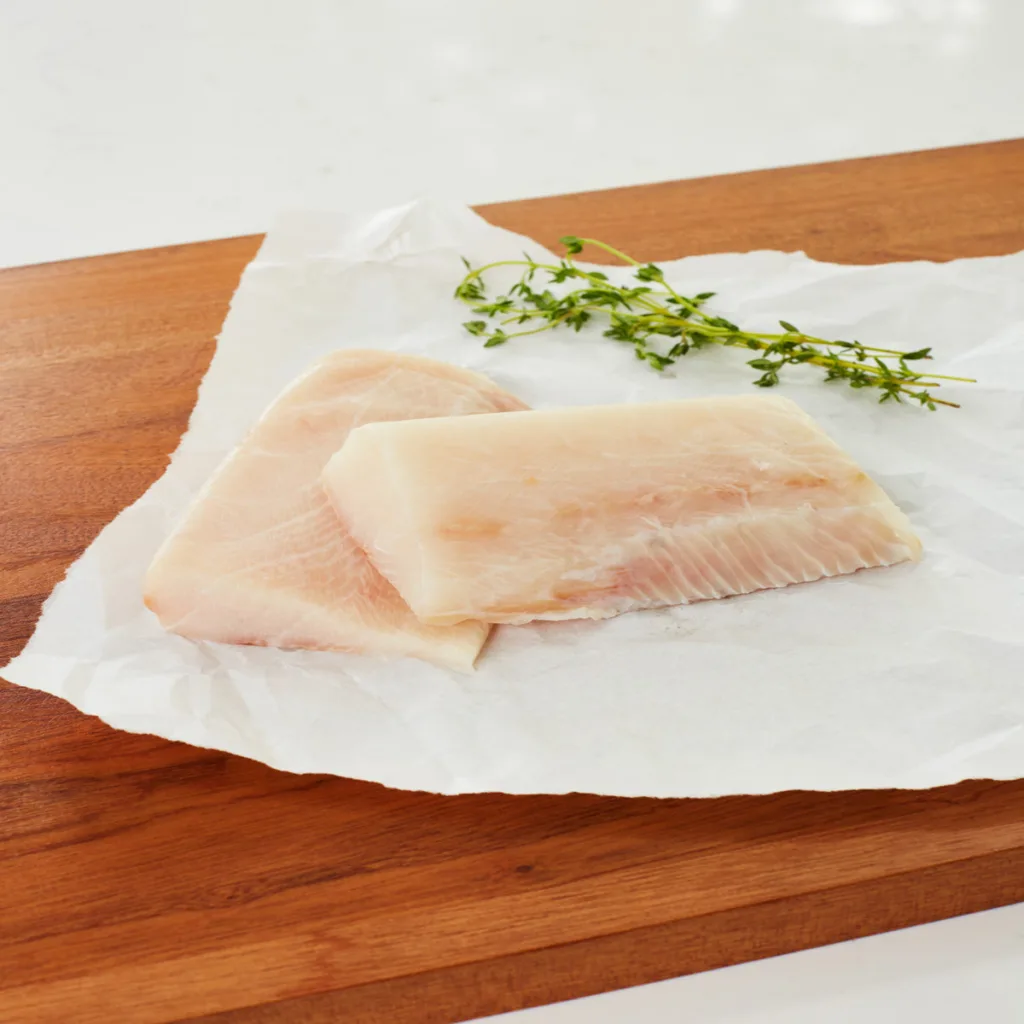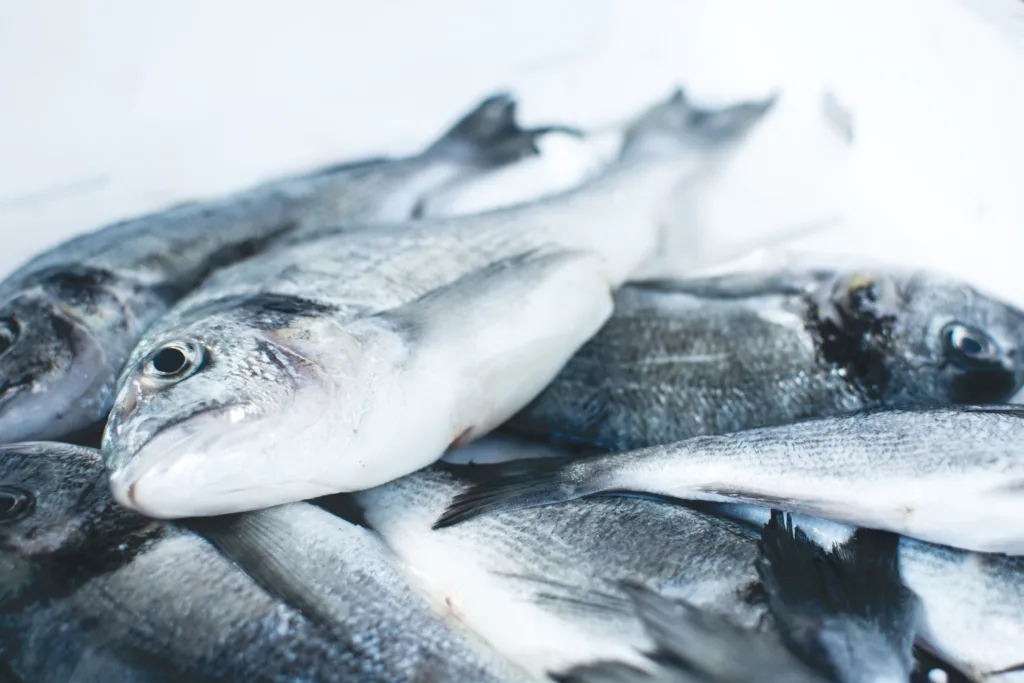Cobia fish is a delicious, mild-tasting white fish that has become increasingly popular in recent years due to its versatility and delicate flavor profile. It can be prepared in a variety of ways and makes an excellent addition to any meal.
What does cobia taste like? Cobia has a mild, slightly sweet flavor that is comparable to other saltwater whitefish such as mahi-mahi, swordfish, or striped bass. It has a firm texture with a slight buttery undertone that pairs well with light seasonings such as lemon juice, herbs, or spices. The taste of cobia is subtle enough that it won’t overpower the other flavors in your dish but sill adds an interesting flavor dimension.
Due to its mild flavor, cobia is incredibly versatile and can be cooked in a variety of ways including baking, grilling, pan-searing or even broiling. To get the most out of your cobia dish, aim for cooking temperatures around 350°F for up to 8 minutes or until it flakes easily with a fork. This will help ensure you achieve perfectly juicy cobia with the perfect hint of sweetness.
When shopping for cobia fish it is important to look for ones that have been caught wild from sustainable sources. This ensures you are getting the best quality product while also protecting our oceans and marine life. Look for cuts that are bright white in color with no discoloration or browning at the edges as this could indicate it was not handled correctly while being processed and stored.
Overall, cobia is an incredibly delicious and versatile fish that adds an interesting layer of flavor without overpowering your dish. Whether you are looking for something new to try out at home or just want something tasty to add to your meal rotation, cobia should definitely be on your list!
What Does Cobia Taste Like?
Cobia has a mild flavor with a smooth texture that makes it similar to other saltwater white fish like mahi-mahi, swordfish, and striped bass. It has a leaner taste than some of these other fish, with a hint of sweetness and nuttiness that is unique to cobia. The meat is light in color and delicate in texture, making it perfect for grilling or baking. For the best results, pair cobia with light flavors such as citrus or herbs to highlight its subtle taste.

Similarities Between Cobia and Cod
Yes, cobia is similar to cod in terms of its mild flavor. Cobia has a white flesh with a texture that is slightly firmer than cod, and it has a mild flavor that is very similar to cod. It can be used as an alternative to cod in many recipes, including baking, grilling, and pan-searing. Additionally, cobia has a higher protein content than cod, making it a good choice for those looking for an extra boost of protein.
The Best Way to Enjoy Cobia
The best way to enjoy the delicious taste of cobia is to grill or sauté it. Grilling cobia requires only a few easy steps. First, season the cobia with salt and pepper and brush both sides with olive oil. Then, preheat a grill to medium-high heat, place the fish on the grill, and cook for 4-6 minutes on each side until cooked through. To sauté cobia, start by seasoning the fish with salt and pepper, then coat a skillet with oil over medium-high heat. Place the fish in the skillet and cook for 3-4 minutes on each side until cooked through. For both methods, it’s important to watch the fish closely so that it doesn’t becoe overcooked. Serve your freshly grilled or sautéed cobia with your favorite sides for a delicious meal!
The Fishiness of Cobia Fish
Cobia is a mild saltwater fish with a very subtle flavor. It doesn’t have the strong fishy taste that some other saltwater fish can have. Its flavor is mild and slightly sweet, making it a great choice for those who don’t like overly fishy-tasting dishes. When cooked, its delicate white flesh flakes easily and holds up to most cooking methods without becoming too strong in taste. It pairs well with bold flavors like garlic, herbs, and citrus juices or zest, making it versatile and easy to work with.
Is Cobia Fish a Bottom Feeder?
Yes, cobia fish are classified as opportunistic bottom feeders. This means that they feed on whatever is available at the bottom of the ocean, such as crabs, shrimp, and other fish. Adults and larger juveniles mainly feed on blue and portunid crabs, while smaller juveniles consume smaller prey like rock shrimp, mantis shrimp, and penaeid shrimp. They also occasionally eat elasmobranchs (ray-finned fish).

Mercury Levels in Cobia
Yes, cobia is a fish that has been recorded to contain higher levels of mercury than other Gulf species. In fact, the highest level of mercury ever recorded for an individual cobia was 3.24 parts per million (ppm). While this is higher than some other fish species from the Gulf, such as yellowfin tuna (0.60 ppm) and hardtail (0.83 ppm), it should be noted that mercury levels can vary significantly between individual fish of the same species and even within the same catch. The EPA recommends limiting consumption of cobia to no more than one meal per week due to its higher mercury content.
The Health Benefits of Eating Cobia
Yes, cobia is a very healthy fish to eat. It is rich in essential nutrients like vitamin D and protein, and it contains high levels of omega-3 fatty acids, which are beneficial for both your brain and body. Omega-3s are known to reduce inflammation, lower blood pressure, improve heart health and reduce risk of stroke. Additionally, cobia is low in mercury compared to other fish such as tuna, making it a safe choice for consumption.
What is the Alternate Name for Cobia?
Cobia is also known by many other names, including black kingfish, black salmon, cabio, crabeater, cubby yew, kingfish, lemonfish, ling, prodigal son, runner, sergeant fish and sergeantfish. It is a marine fish found in the warmer waters of the Atlantic Ocean and can reach lengths of up to 6 feet. Cobia has a dark-brown back with silvery sides and white belly. It is an active predator that feeds on a variety of invertebrates such as crustaceans and mollusks as well as smaller fish.
What Is the Best-Tasting Fish?
The best tasting fish is a subjective question as tastes differ from person to person. However, a few of the most popular and widely enjoyed types of fish include cod, sole, halibut, sea bass, trout and salmon. Cod has a mild, milky flavor that is very popular in many dishes. Sole has a mild, almot sweet flavor that can be cooked in various ways. Halibut has a sweet, meaty flavor that is widely enjoyed around the world while sea bass has a very mild, delicate flavor. Trout is often used in smoked dishes and has an earthy flavor while salmon can range from mild to richly flavored depending on the type of salmon. All of these types of fish are delicious and offer unique flavors for any palate.

Comparing the Taste of Cobia and Grouper
It really depends on what your needs are. If you’re looking for a fish with more protein and less saturated fat, then grouper might be the better option. Grouper also has a stronger flavor due to the fat that runs through its meat. If you’re looking for a milder tasting fish, then cobia might be the better choice. Ultimately it comes down to personal preference and dietary needs when deciding which type of fish is best.
Do Cobia Have Parasitic Infections?
Yes, cobia have a variety of parasites, including nematodes, trematodes, cestodes, copepods, and acanthocephalans. These parasites can infect the fish in a variety of ways. For example, nematodes are usually ingested with food or inhaled from the water. Trematodes and cestodes are usually contracted through ingesting infected prey or by consuming contaminated water. Copepods and acanthocephalans attach themselves to the cobia’s skin or gills. If a cobia is infected with any of these parasites it can cause serious health concerns for the fish as well as potentially spread to other organisms in the aquatic environment.
Comparing Cobia and Mahi-Mahi
When it comes to comparing cobia and mahi-mahi, there is no clear winner. Each type of fish has its own unique flavor and texture that can be enjoyed by different palates. Cobia has a firmer texture than mahi-mahi or grouper and its fat remains in the meat, providing more flavor and moisture content. Mahi-mahi has a milder, sweet flavor with a light, flaky texture. Ultimately, it comes down to personal preference as to which type of fish is best for you.
Fish with No Fishy Taste
The fish that has no fishy taste is tilapia. This mild-flavored fish has a subtle sweetness and no strong fishy taste. Tilapia is an extremely versatile white fish, and it goes well with a variety of flavor profiles. It can be easily cooked in a variety of ways, making it a great choice for those who don’t enjoy the stronger taste of other kinds of fish. Cod also has a mild flavor and slight sweetness, but it’s not quite as mild as tilapia.

The Fish With the Most Fishy Taste
The fish with the strongest and most “fishy” taste is usually herring. Herring are high in fat content and have a very distinctive flavor that many people associate with the taste of fish. Herring can be prepared in a variety of ways, including pickled, smoked, canned, or as fillets. Mackerel and sardines are also considered to have strong flavors compared to other fish due to their higher fat content. Anchovies also have a very strong flavor, but they tend to be used more as a seasoning rather than an individual dish.
Conclusion
Cobia is a mild saltwater fish with a delicate flavor profile and a firm, white flesh. It has a sweet, almost nutty taste that is not overpowering and can be cooked in many different ways. Cobia is similar to other mild saltwater fish such as mahi-mahi, swordfish, or striped bass in terms of texture and flavor. Its subtle flavor makes it an excellent choice for those looking to enjoy the taste of fish without being overwhelmed by the fishy taste. Whether you choose to bake, grill, or pan-sear cobia, you are sure to have an enjoyable and tasty meal.
